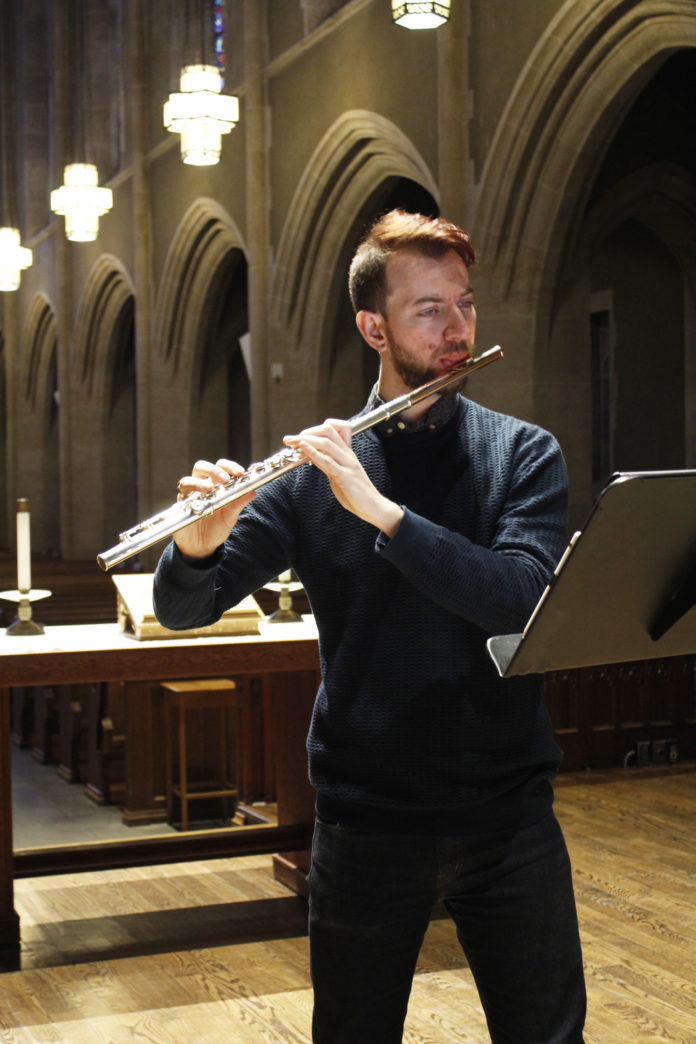Considered a virtuosic flutist, Joshua Weinberg was more than happy to perform the second part to the Muhlenberg Music department’s annual Contemporary Music Festival. As I described in my previous article on this event, the Contemporary Music Festival keeps the continuous goal to feature and distribute music of the now. Specifically, distributing the word and acknowledgement of living, breathing, composers.
Organized by Dr. Andrew Ardizzoia, the Contemporary Music Festival sponsors and supports living contemporary composers and performers to showcase music on the college’s campus — more specifically, music that differs from the classical and popular music that is often performed by music students and faculty.
Last weekend, the second and last part to the Contemporary Music Festival was performed; this time featuring the contemporary performer and composer Joshua Wenberg. Every piece performed in his repertoire expressed either the large range of pitch the instrument holds, the various tone qualities it can express, and finally the change in the original role and intent of the instrument in question.
“[The piece] pushes the boundary from the softest you can play to the loudest you can play,” Weinberg describes. Before each piece, Weinberg explained certain key aspects in his pieces to listen for, giving overall context and certain historical factors regarding the piece itself. A good example of this is the piece “Voice” by Toru Takemitsu.
Described as one of his “all time favorites,” Weinberg expressed great love for the complexities and historical significance that Voice holds for both him and flute performers in general.
For one to understand this piece however, it’s important that the audience gets some context regarding the historical theater that Takemitsu is emulating. Known as the oldest type of theater to be performed, Noh is a performance art that originated from Japan in the fourteenth century. Combining music and dance, Noh uses a series of slow deliberate movements, poetry, and elaborate costume to tell historical legends and folktales. Weinberg, however, wanted to express specifically the way these performers use facial expression — being that there is none. The performers are wearing masks at all times, and use the lights and shadows to change how the expression appears on the mask. Which demonstrates how one of the most important aspects of Noh theater is actually atmosphere.
“Voice,” if anything, is all about intense atmosphere. Combining the melodic abilities of the flute, the performer’s voice, as well as percussion to thoroughly emphasize an eerie atmosphere. Using text in French and English, the ‘plot’ is as so:
“Qui va la? Qui que tu sois, parle, transparence!”
“Who goes there? Speak, transparence, whoever you are!”
Weinberg held us completely throughout the piece. Moving his head along with the flute, Weinberg appeared to embody the character and accompaniment in one. Then of course there was the overall ‘space’ in the piece. Described as the Japanese word “Ma,” Weinberg explained that space, and silence, were very essential in Noh theater — used to further emphasize and express the overall atmosphere of the production.
Joshua Weinberg was truly amazing and his performance remarkable. Even more importantly though, he created a space of difference. A room where music of composers that I have never heard of before — now their memory is alive. Alive for me to learn and listen to, and further engage with the music of today.
Lauren Mazur, member of the class of 2019, serves as the co-editor of the Arts & Culture section. Now a Junior, she is a double major in English and Music as well as a part of the Pre-Law program.






















